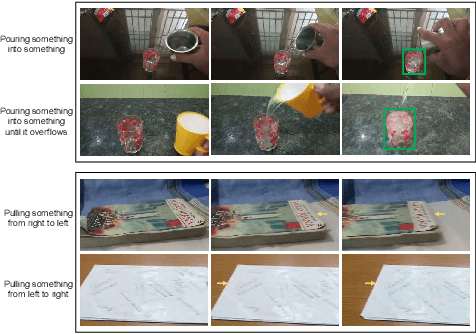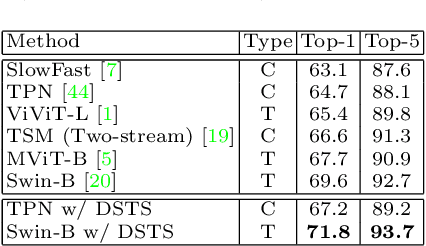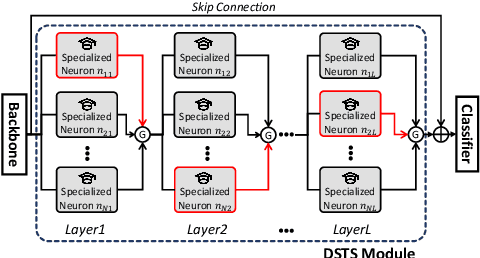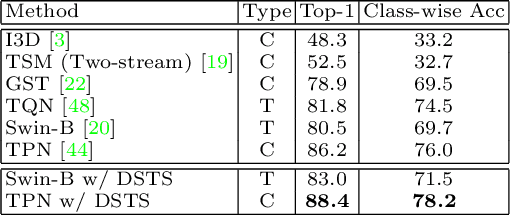Dynamic Spatio-Temporal Specialization Learning for Fine-Grained Action Recognition
Paper and Code
Sep 03, 2022



The goal of fine-grained action recognition is to successfully discriminate between action categories with subtle differences. To tackle this, we derive inspiration from the human visual system which contains specialized regions in the brain that are dedicated towards handling specific tasks. We design a novel Dynamic Spatio-Temporal Specialization (DSTS) module, which consists of specialized neurons that are only activated for a subset of samples that are highly similar. During training, the loss forces the specialized neurons to learn discriminative fine-grained differences to distinguish between these similar samples, improving fine-grained recognition. Moreover, a spatio-temporal specialization method further optimizes the architectures of the specialized neurons to capture either more spatial or temporal fine-grained information, to better tackle the large range of spatio-temporal variations in the videos. Lastly, we design an Upstream-Downstream Learning algorithm to optimize our model's dynamic decisions during training, improving the performance of our DSTS module. We obtain state-of-the-art performance on two widely-used fine-grained action recognition datasets.
 Add to Chrome
Add to Chrome Add to Firefox
Add to Firefox Add to Edge
Add to Edge